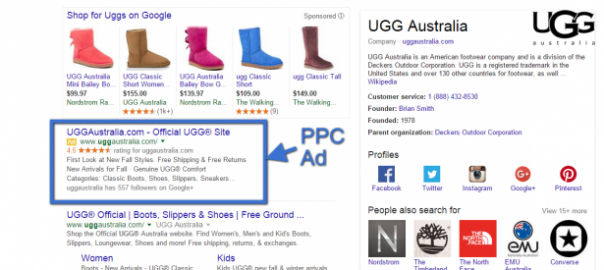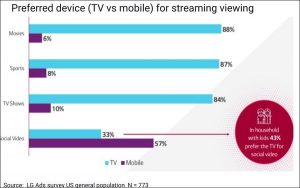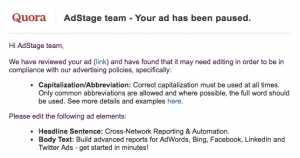
Some say search volume no longer matters, that now it’s all about quality and conversions. While quality and conversions are important, so is keyword search volume.
Ads containing highly searched keywords (like insurance) will be seen by more eyes than ads with niche keywords. While these broader keywords are generally more expensive, they also tend to build more brand awareness.
Here are three easy ways you can increase search volume and boost brand awareness.
Target High Volume Keywords
High volume keywords will yield more searches, but at a cost. Those clicks add up. Ideally, try to find high volume keywords that aren’t competitive. This will get you the most views for your money. To find the best keywords, perform some keyword research using a tool like Wordtracker.

Here, auto insurance yields the most search volume because it’s broad. If you want to reach the most eyes, it might be worth investing in that keyword phrase.
But be smart when managing your high volume keywords. Perhaps start off with auto insurance to increase your brand awareness. Once you know which search queries perform the best, slowly implement long-tail keywords (e.g. affordable car insurance) to target those searchers.
A tool like the Google AdWords Keyword Planner is helpful for maximizing your search volume. You can compare monthly and yearly average keyword search volumes, then adjust your campaign accordingly.
Invest in Display and Contextual Ads
Display ads capture attention, but often have low click-through rates. CTRs average 0.06% according to Google’s Display Benchmarks Tool.
However display ads, when targeted correctly, can lead to more search volume. In fact, 53% of HubSpot co-founder Dharmesh Shah’s customers use display ads alongside their inbound efforts. Here’s why.
Let’s say you’re on a local news website, and see this huge expandable banner ad.

At first you might be annoyed, and decide to quickly close it. But later on you get home and realize your air conditioner isn’t working. You remember that bright orange ad and go online to search for that company.
Bam. That banner ad just scored the company a sale.
While nobody clicked on that ad, it did get the company a new customer. It works because it’s tailored to a specific audience (e.g. news readers who are homeowners), and it captures the attention of that audience.
The same applies to contextual advertising. If you’re on a classic car website, a contextual ad for classic car hoods will definitely catch your attention.
Remember, display and contextual advertising can boost search volume, when tailored to specific audiences.
Diversify Your Ads
Don’t put all your eggs in one basket. Play it smart and diversify your PPC ads among different platforms like Google, Bing, eZanga, and Yahoo Gemini.
Google has the highest search volume, which means you’ll pay a premium for clicks. However, you’ll have access to millions of people searching for your product. And your ads will be at the front of the pack.

Yahoo!, Bing, and eZanga are less expensive alternatives to Google, which is helpful if you’re on a tighter budget. And don’t feel obligated to use just one network. As you optimize, you’ll find some keywords work really well on one network, and not so great on another. You might also find that you’ll have a higher ROI if you invest in multiple networks at once.
Conclusion
With search volume, you get what you pay for. In this case, paying more for higher search volume is worth it. The higher the search volume, the more people seeing your ads.
Depending on your budget and needs, pick and choose which areas (banner ads, high volume keywords, search platform) to pump money into. Then watch the money roll in.
Digital & Social Articles on Business 2 Community(105)









